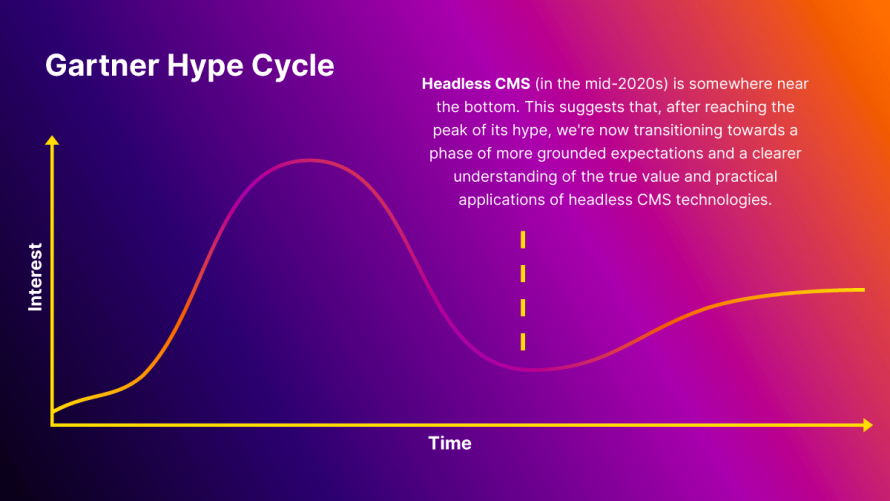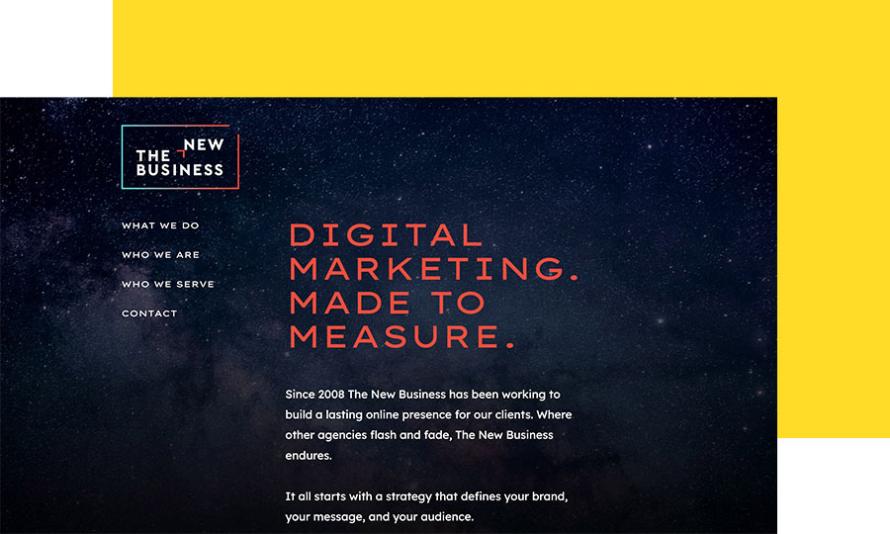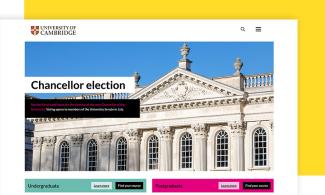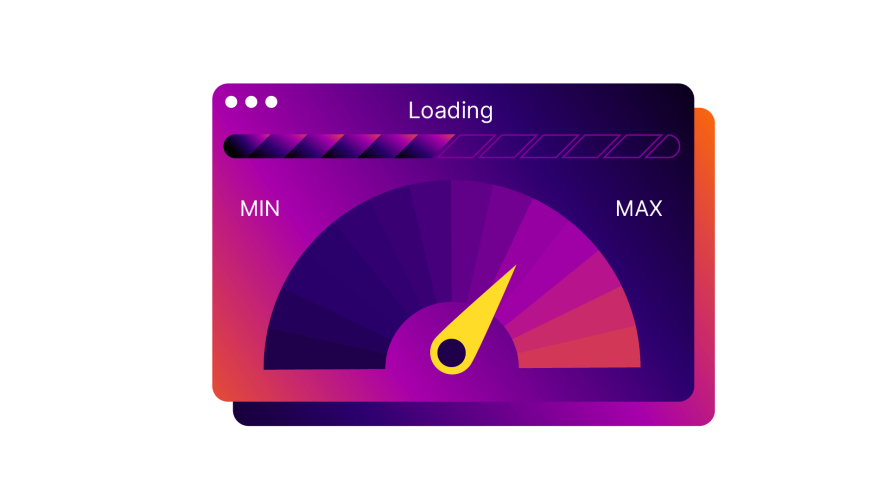Filters
Content Type
Topics
Your Ultimate Guide to Headless CMS
The desire to create, manage and deliver content across multiple platforms has led many to rethink traditional strategies. That’s why the term “headless CMS” has become a buzzword among developers, marketers and content creators alike.
But is the absence of a feature – the head! – really a good thing? Well, yes it can be in the right situations. It allows businesses to easily publish to numerous types of devices. However, it’s important to remember that the main use case for almost every content management system (CMS) is to support the website. Therefore, if going for a headless CMS makes that too hard, then it’s not the right option.
In this guide, we’ll demystify the concept of a headless CMS, breaking down its components, advantages and how it’s transforming the way we think about content management.
Understanding the Shift From Traditional to Headless CMS
Image

In a traditional approach, the CMS is tightly coupled with the presentation layer (the "head") of the website or application. This means that the CMS controls both the content creation (backend) and the way that content is displayed to the end user (front end).
In contrast, a headless CMS decouples the content management and content delivery aspects. It only focuses on content management, while the content gets retrieved and delivered to any type of front-end or user interface, such as websites, mobile apps, smart devices or any other platform.
This approach gives developers more flexibility and freedom in how they design and deliver the user experience, as they can use any technology stack or framework they prefer for the front end, without being tied to the limitations of a specific CMS's templating system or presentation layer.
It's fascinating to note where headless CMS strategies currently stand. On the Gartner Hype Cycle – a model that illustrates the adoption, maturity and social application of specific technologies – headless CMS (in the mid-2020s) is somewhere near the bottom and moving forward to the most suitable use cases.
Image

This is significant because it suggests that, after reaching the peak of its hype, we're now transitioning towards a phase of more grounded expectations and a clearer understanding of the true value and practical applications of headless CMS technologies.
Headless CMS vs. Traditional CMS
Choosing between a headless CMS and a traditional CMS depends on your specific needs, resources and long-term digital strategy. Each has its advantages and challenges, but the decision ultimately hinges on what you aim to achieve with your digital presence.
Key Elements That Define Headless CMS
The primary allure of a headless CMS lies in its ability to seamlessly distribute content across multiple channels. Just create a piece of content once and easily push it to a website, a mobile application, digital assistants, smart watches and any other internet-connected device.
This versatility comes from the decoupled architecture of a headless CMS. It simplifies content management and ensures that the content can be optimized and delivered to suit the unique requirements and capabilities of each platform or device, enhancing the user experience across the board.
While a headless CMS offers many benefits, it's essential to recognize when it might not be the best fit for your business. If your content distribution strategy is solely focused on maintaining a single website, the complexities and capabilities of a headless CMS may not be fully leveraged.
Traditional CMS platforms, with their integrated content management and presentation capabilities, could be more aligned with your needs in such scenarios, offering a straightforward, cost-effective solution.
The Role of APIs in Headless CMS
At the heart of a headless CMS's functionality are APIs (Application Programming Interfaces), which deliver content from the backend to any front-end interface or device. They ensure that the content stored in a headless CMS can be accessed, managed and displayed across diverse platforms without direct coupling to the CMS itself.
Two types of APIs are predominantly used with headless CMS:
- REST (Representational State Transfer): REST APIs have been the standard for web services for years, allowing for straightforward, stateless communication between the client and server using familiar HTTP methods that often operate upon single pieces of content.
- GraphQL: GraphQL offers a more flexible approach, enabling clients to fetch the data they need exactly and nothing more. This efficiency in data retrieval and delivery is particularly beneficial in scenarios where bandwidth and performance are critical considerations.
Benefits of Adopting a Headless CMS
Adopting a headless CMS presents both immediate and long-term advantages, enhancing how organizations manage and deliver content.
Decoupling works exceptionally well when collaborative teams aren’t siloed. When administrators can see the sites in one place, content editors can get the best CMS tools, and developers can work in their preferred frameworks and languages, it’s an ideal way for teams to work.”
Molly Duggan, CEO at Molly Duggan
Enhancing Content Delivery Across Multiple Platforms
A headless CMS leverages the content-as-a-service (CaaS) model. This concept revolutionizes content strategy by enabling smooth content distribution across an array of channels and touchpoints. By decoupling the content from its presentation, a headless CMS ensures that content is crafted in a format that's ready to be served across different platforms – even on emerging technologies like voice assistants and AR/VR experiences.
Integration with various front-end frameworks, such as Next.js and Gatsby, is streamlined, facilitating efficient omnichannel content delivery that is tailored to each channel's unique needs. Pushing content updates in real time using APIs ensures that all platforms stay synchronized, offering a cohesive user experience regardless of how or where the content is accessed.
Additionally, the headless architecture is inherently designed to accommodate new technologies without necessitating extensive backend modifications. This adaptability is necessary for businesses looking to explore new digital frontiers without being bogged down by technological constraints.
Promoting Scalability and Flexibility in Content Management
Businesses can easily manage traffic surges and scale operations without affecting their site's performance. This capability ensures that your digital presence grows in tandem with your business without the need for a complete system overhaul.
The flexibility provided to development teams is significantly enhanced, as the constraints of traditional CMS platforms do not confine them. The ability to use modern development frameworks and languages encourages innovation and efficiency in building digital experiences.
The utilization of Continuous Integration/Continuous Deployment (CI/CD) practices is another area where headless CMS shines. Quicker content publishing, coupled with the ability to test and iterate rapidly on a smaller front-end codebase, not only accelerates time-to-market but also ensures that the content remains dynamic and relevant.
The beauty of decoupled applications is that they are fast, stable and secure, which helps to create a better user experience and a better user experience builds trust in the brand.”
Molly Duggan, CEO at Molly Duggan
Pantheon in Action: The New Business
By adopting a decoupled CMS, The New Business (TNB) – a forward-thinking digital marketing agency – has significantly enhanced its ability to deliver rich, engaging digital experiences important for captivating today’s tech-savvy travelers.
Image

Partnering with Pantheon has further amplified TNB’s capabilities, providing a robust, secure hosting environment that complements their decoupled practices.
Pantheon’s platform supports TNB’s mission to deliver top-tier digital experiences by ensuring reliability, scalability and security. This collaboration underscores the synergy between cutting-edge technology and strategic digital marketing, showcasing the tangible benefits of headless CMS in creating dynamic, scalable online presences.
For businesses in the tourism industry and beyond, TNB’s approach offers valuable insights into the future of digital engagement. By prioritizing user experience through a headless CMS, companies can keep pace with digital trends and set new benchmarks for customer engagement and satisfaction. One example of this is the interactive itineraries TNB created for the tourism site Secrets of the Back Forty.
Pantheon makes it really easy to spin up a new project and quickly get the backend the way we like it…It’s been a big time saver.”
Mike Jacobs, Co-Founder of The New Business
Next Steps: Transitioning to a Headless CMS With Pantheon
It's clear that a headless CMS represents a transformative approach to content delivery and management. However, it's important to remind ourselves that this route, despite its numerous advantages, is not universally the best fit for every organization. The decision to leverage a headless CMS should be informed by your specific business needs, content strategy and the digital experiences you aim to create for your audience.
There are, nevertheless, many scenarios where the agility, scalability and flexibility offered by a headless CMS make it a more efficient and strategic choice. For businesses looking to push content across multiple platforms, integrate with modern development frameworks and future-proof their digital presence, transitioning to a headless CMS can provide a competitive edge.
Pantheon is a robust WebOps platform that effortlessly supports headless WordPress and Drupal instances. It’s designed to cater to the needs of businesses and developers seeking the benefits of a headless CMS while ensuring security and reliability. Whether you're managing a high-traffic website or developing a complex web application, our Pantheon WebOps platform provides the infrastructure and tools necessary to elevate your web operations.
If you're considering making the shift to a headless CMS or simply curious about how it can transform your digital strategy, there's no better way to understand its impact than by experiencing it firsthand.
Take advantage of our no-obligation offer to explore the possibilities of a headless CMS supported by Pantheon's powerful WebOps platform. Start your journey towards a more dynamic, flexible and innovative content strategy today by trying our Front-End Sites paired with WordPress or Drupal!


